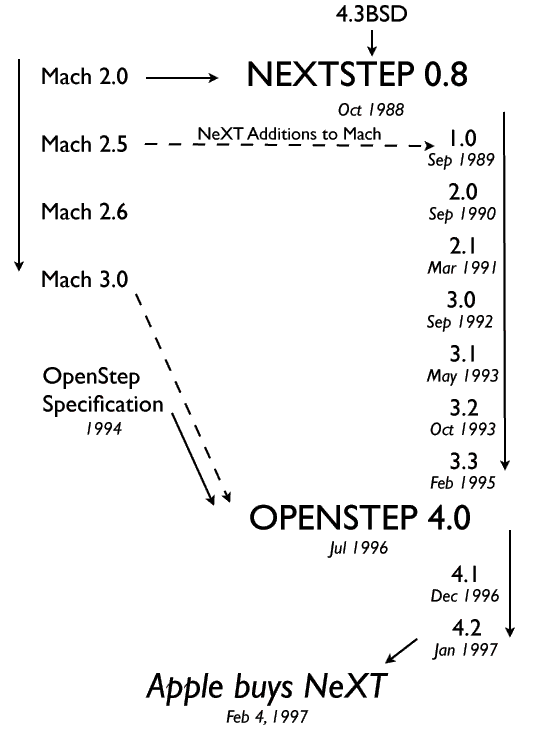NeXTSTEP – the father of Apple’s iOS and OS X
In 1985, Steve Jobs, co-founder of Apple, left the company due to board room politics and intrigue. He subsequently launched NeXT – a computer company that would focus on providing high-end workstations to businesses and the educational sector, with an emphasis on selling these workstations to universities at a price point that was below competitors such as Apollo, Hewlett Packard and Sun.
NeXT created their own operating system to run on these workstations – which was called NeXTSTEP. NeXTSTEP was built as a UNIX like operating system, containing parts of both the BSD (Berkeley Software Distribution) and Mach kernels. It was one of the earliest operating systems to use a GUI and object orientated programming.
When the Mach project started, its goal was to create a microkernel to replace the monolithic BSD kernel – with as many services as possible moved from the kernel space and into the user space, leaving the kernel as more of a message parsing service between different services, hardware, and drivers – providing better security to the services operating within the user space with lower privileges, – whilst strengthening kernel stability, so user space services could be separately restarted without requiring an entire kernel restart.
At the time, Mach was incomplete, because of its lack of a network stack and a virtual file system, so NeXT decided to take and merge these components from the BSD kernel, the downside being that the features copied from BSD were designed to run in the kernel space, so the resulting kernel was monolithic rather than a microkernel.
NeXT released version 1.0 of its NeXTSTEP operating system in 1989, and whilst its companion hardware, and operating system, were hailed as revolutionary, NeXT struggled with sales and market share, eventually folding its hardware division entirely to focus on porting its operating system to other platforms such as x86-based PCs and Sun workstations. Despite this, a NeXT workstation using the NeXTSTEP operating system was used by Sir Tim Berners-Lee to create the world wide web.
In 1996, Apple was looking at replacement candidates for its aging ‘System 7’ operating system. When Jobs became aware of Apple’s search he proposed NeXTSTEP to executives at Apple, leading to their announcement in December 1996 that it was purchasing NeXT, and would use its software as the springboard for a new operating system for the Macintosh.

The NeXTSTEP operating system is the fundamental basis for all Apple operating systems in use today – both iOS and OS X are derived from their NeXTSTEP parent, and was an operating system far ahead of its time considering that almost 30 years after its release it is still at the heartbeat of some of the most successful computing products ever created.
Today, Apple finds itself as the world’s most valuable company – more valuable than Coca Cola, McDonalds and Marlboro combined – none of which would have been possible without NeXTSTEP.

